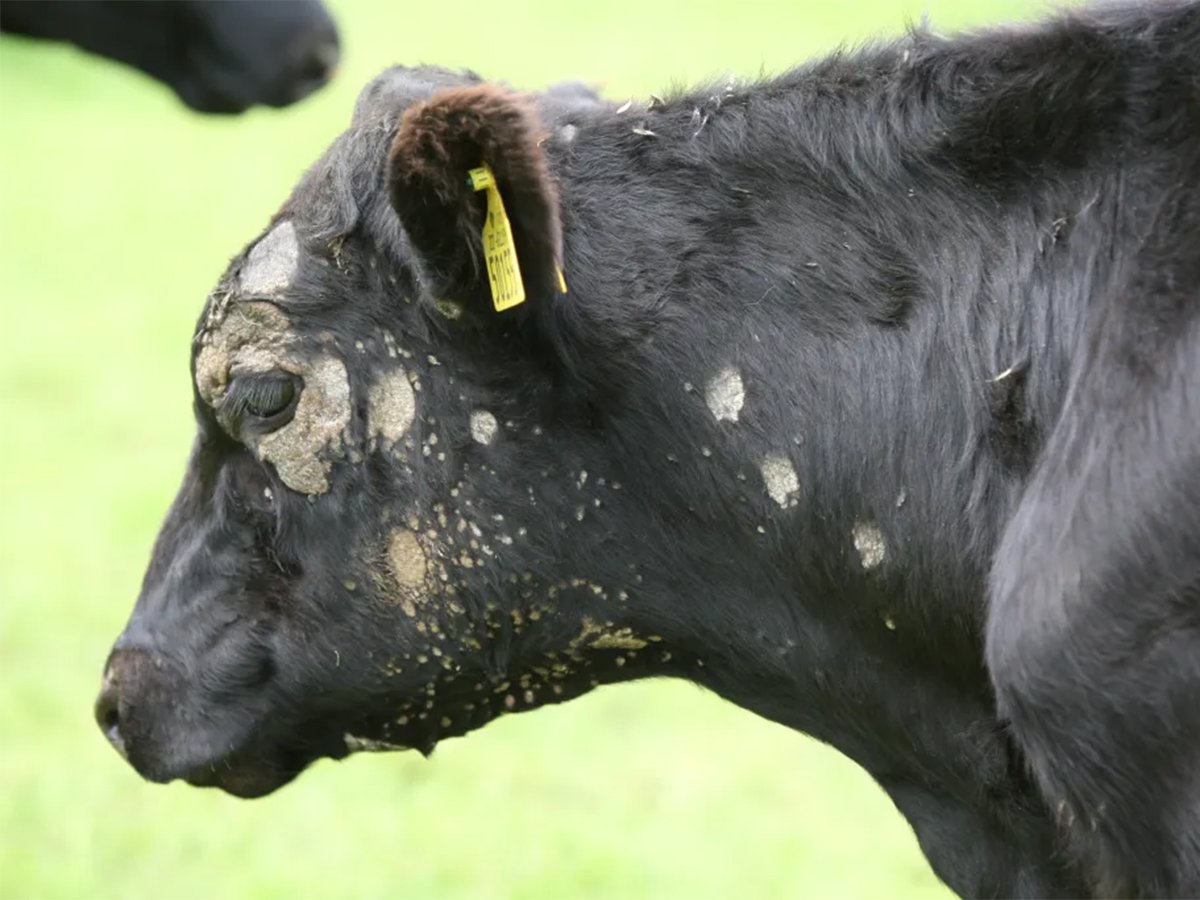UPDATED: September 12, 2025 – I receive inquiries every year about calves or older cattle that are losing hair or even going bald. The most common skin conditions that can cause hair loss are caused by parasites such as lice and mites.
Parastic causes of hair loss
Most producers effectively control lice in their cattle using pour-on endectocide products in fall. However, producers can occasionally see hair loss and irritation caused by lice if untreated cattle are introduced and cattle become re-infested.
Read Also

Research looks to control flea beetles with RNAi
A Vancouver agri-tech company wants to give canola growers another weapon in the never-ending battle against flea beetles.
Lice can be classified into two groups: biting lice, of which there is one species, and sucking lice, of which there are three species.
The louse spends its entire life cycle on the body of the animal, and various species of lice might be found in different body areas. For example, biting lice tend to congregate on an animal’s top line, particularly in the withers area.
All lice infections are characterized by severe itchiness and skin irritation. As a result, the animals will rub and scratch, which causes hair to break off and lead to hair loss. Severe infestations of sucking lice in young animals can cause anemia and unthriftiness.
Pour-on endectocide products include ivermectin, doramectin, eprinomectin and moxidectin.
Mites can also cause hair loss.
Several species can cause mange in cattle, which often causes crusting and thickening of the skin, intense itchiness and hair loss.
Psoriatic mange and sarcoptic mange are not commonly seen because of the use of pour-on endectocides, but they can cause severe irritation and produce dramatic lesions in affected animals.
Chorioptic mange is the most common type of mange in cattle in Canada. This mite predominantly affects animals just above the heel area of the legs as well as around the tail head and udder area. Like many of these parasites, it is seen more commonly in winter.
Endectocide products tend to control this mite, but I have seen several outbreaks of chorioptic mange in herds that have already been treated with endectocides. These unusual outbreaks in well-treated herds have been difficult to explain, and we don’t know if these mites are more difficult to treat with endectocides or if another source of the mite is causing re-infestation.
The chorioptic mange mite is supposed to spend its entire life cycle on the animal, but these outbreaks might suggest that it can survive in the environment. A veterinarian can diagnose which type of mite is present by taking a skin scraping and examining the material under the microscope.
Bacterial and fungal infections
Bacterial skin infections can also cause hair loss.
Cattle in moist climates can be infected with a bacteria known as Dermatophilus, which causes a severe chronic skin infection resulting in crusting, scabs and thickening of the skin with resulting hair loss.
Fungal infections that cause ringworm are often seen in young growing calves younger than eight months and can cause local hair loss on the affected areas that are often circular, gray and scaly. Ringworm is usually a temporary problem, and spontaneous recovery is common.
However, many of the inquiries I receive about hair loss in cattle are not related to parasitic, bacterial or fungal infections. Instead, the producer is inquiring about an individual animal that is losing hair over its entire body with no apparent itchiness or irritation.
Genetic defects cause hair loss or baldness in calves, and in some cases they can be lethal.
For example, young calves that are born with no hair or lose their hair shortly after birth may have an inherited disorder that causes hair loss known as hypotrichosis. These conditions are relatively rare but have been found in a variety of cattle breeds.
Nutritional deficiencies, excessive estrogen production and a traumatic episode or illness such as a high fever can damage the hair follicle or inhibit hair follicle growth. Unfortunately, a definitive cause is difficult to identify in many of these isolated cases.
Producers who have animals with severe hair loss should ask their veterinarian to take a skin scraping to diagnose mites and examine them carefully for the presence of lice. A skin biopsy may be useful in some cases to diagnose other inflammatory conditions. Producers should consult their veterinarian to ensure they have a good parasite control protocol for both external and internal parasites.

















